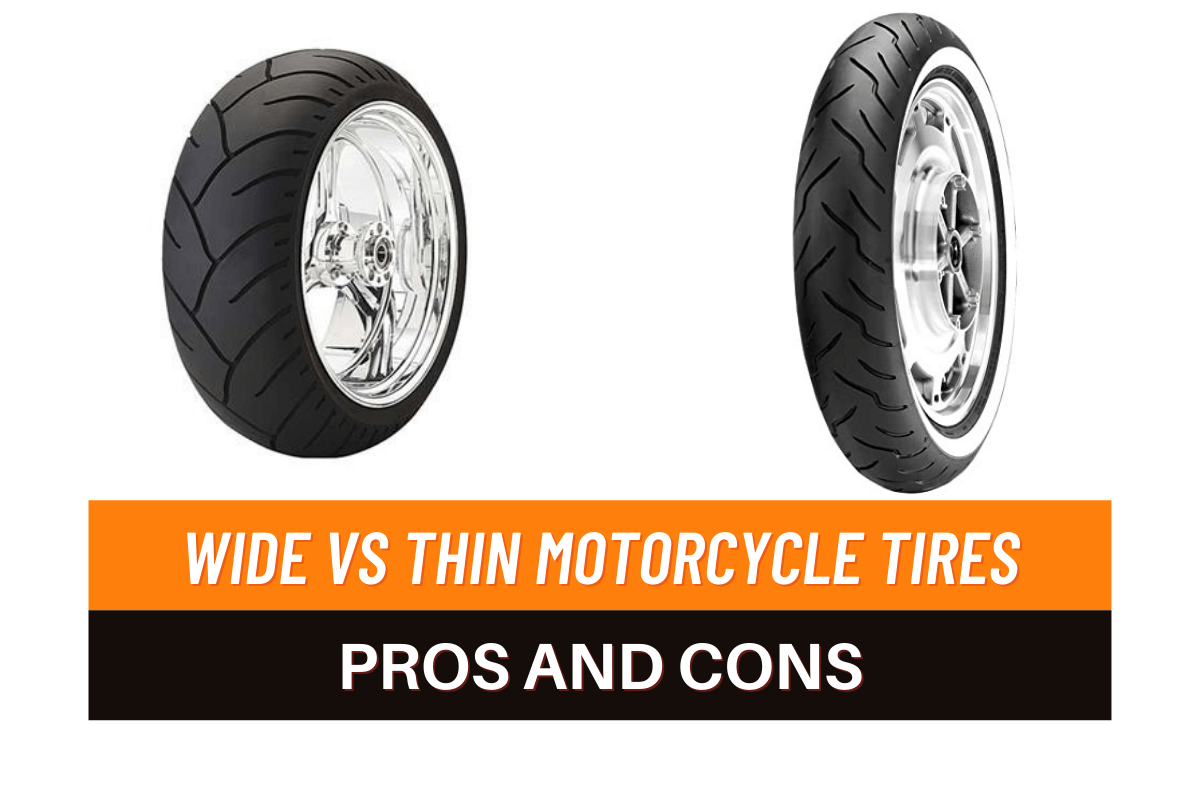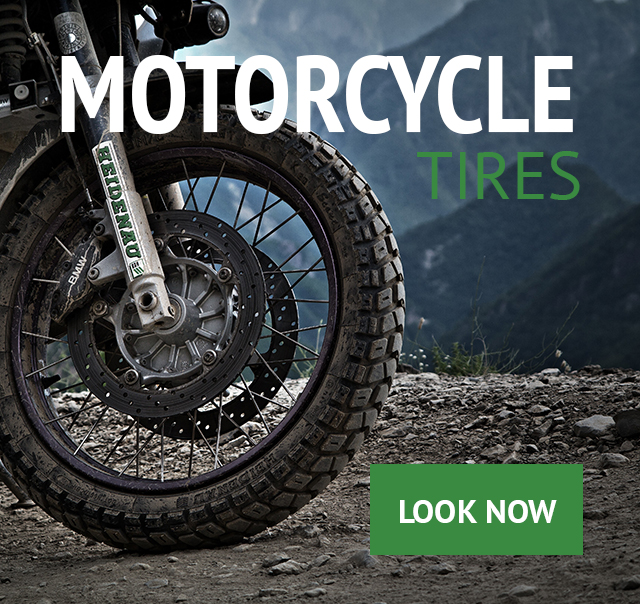Motorcycle Tyre Guide to Improve Tyre Longevity and Performance
Motorcycle Tyre Guide to Improve Tyre Longevity and Performance
Blog Article
Accessibility Essential Services Provided in the Field With Our Extensive Motorcycle Tire Overview for Fanatics
The Motorcycle tyre guide offers vital understandings for lovers seeking to boost their riding experience. It covers numerous tyre types, suitable selection based on riding styles, and important upkeep practices. Motorcyclists can gain from understanding tire pressure and the importance of recognizing wear indicators. With this understanding, they can browse possible issues and ensure peak performance. Nonetheless, there are important aspects of tyre care that may stay vague, motivating additional expedition.
Recognizing Various Kinds of Motorcycle Tyres

How to Choose the Right Tire for Your Riding Design
When selecting the appropriate tyre for a specific riding design, bikers should think about numerous elements that align with their private preferences and the intended usage of their Motorcycle. Various tires provide to certain problems, such as sport, touring, or off-road riding. For journey cyclists, dual-sport tyres with a sturdy walk pattern are important for tackling both led roads and difficult surfaces. Conversely, sportbike lovers must decide for efficiency tyres that offer remarkable hold and faster handling on smooth surfaces.Additionally, climate plays a substantial duty; bikers in damp areas might gain from tyres made for boosted water displacement. Cyclists should additionally take into consideration the tyre width and profile, which can affect security and ability to move. Eventually, selecting the ideal tire includes stabilizing these considerations to boost convenience, efficiency, and safety and security, making sure that each ride meets the biker's expectations and aligns with their one-of-a-kind style.
Important Tire Upkeep Tips for Longevity
Keeping Motorcycle tyres is necessary for expanding their life-span and ensuring optimal performance when driving. Consistently examining tire pressure is important; under-inflated tires can result in increased wear and compromised handling. Fanatics should likewise check walk deepness, as ample step is important for hold and safety.Rotating the tyres occasionally aids attain even use, specifically for those that often ride in diverse conditions. Furthermore, maintaining tyres clean from particles and pollutants can avoid wear and tear of the rubber.Another essential aspect is making sure that the wheels are effectively straightened, as misalignment can result in uneven wear. Routine inspections for any punctures or foreign items embedded in the tires are a good idea, as early detection can avert more damage. Finally, storing the Motorcycle in a climate-controlled environment can protect against rubber deterioration, making certain the tires stay in prime problem for longer.
Recognizing Signs of Tyre Wear and Damages
Identifying indicators of tire wear and damages is important for each Motorcycle enthusiast. Tread deepness indications provide essential information regarding the continuing to be hold, while sidewall fractures can signify deeper structural concerns (motorcycle tyre guide). Comprehending these variables assists assure both safety and security and performance on the roadway
Step Depth Indicators
Tread depth indicators serve as vital signals for Motorcycle fanatics to examine tyre wear and damages. These markings, commonly discovered within the walk grooves, provide a visual referral for the remaining tread deepness. As tyres wear down, the step deepness lessens, influencing grip and handling. Enthusiasts are encouraged to on a regular basis examine these signs to establish when replacement is essential. A tread depth of 1.6 mm is usually taken into consideration the lawful minimum; however, many riders favor to change tyres faster for suitable efficiency and security. Monitoring step deepness not only assures a smoother adventure however additionally enhances overall safety on the roadway. Acknowledging these indicators can significantly expand the life of a bike's tires and enhance riding experience.
Sidewall Cracks Evaluation
Tyre wear shows up in numerous types, and sidewall fractures are among the most worrying signs of damage that fanatics must keep track of carefully. These cracks can happen because of elements such as UV direct exposure, inappropriate inflation, and age. They may look like little fissures or larger gashes along the tyre's sidewall, compromising architectural integrity. Lovers must routinely inspect their tyres, specifically after lengthy trips or exposure to rough problems. Ignoring sidewall fractures can lead to disastrous tyre failing, leading to loss of control while riding. If any cracks are spotted, it is recommended to speak with a specialist for assessment and possible replacement (motorcycle tyre guide). Proactive monitoring assurances safety and lengthens the life-span of Motorcycle tires, preserving peak performance when traveling
On-the-Road Tire Repair Work Techniques
When a motorcyclist comes across a flat tire try these out when traveling, swift and reliable repair work methods can make all the distinction in restoring wheelchair. Examining the damage is essential; if the puncture is located on the walk and is no larger than a quarter-inch, a repair may be possible. Bikers ought to have a tire repair work set that commonly includes plug tools, rubber plugs, and sealant.To implement a fixing, the biker should eliminate any type of debris from the slit and place a plug utilizing the consisted of tools. Correct securing can prevent air loss and permit the motorcyclist to continue their trip. Furthermore, making use of a portable air compressor can help pump up the tyre to a proper pressure.If the damages is more considerable, short-term services may involve requiring roadside help. Understanding these on-the-road repair work strategies supplies bikers with confidence during unexpected tire problems.
The Importance of Tyre Pressure and Its Influence On Efficiency
Tyre pressure plays an essential function in Motorcycle efficiency, affecting handling and safety. Maintaining suitable pressure degrees ensures far better contact with the road, enhancing stability throughout rides. Conversely, inaccurate tire stress can result in lessened managing capabilities and boosted wear on tyres.
Optimal Pressure Degrees
Keeping optimal stress levels is necessary for guaranteeing a bike's efficiency and safety and security. Tyre stress directly affects fuel performance, stopping distance, and total trip convenience. Over-inflated tyres can bring about decreased call with the road surface, endangering grip, while under-inflated tyres may trigger too much wear and enhance the danger of blowouts. Makers usually suggest particular stress degrees that differ based on the Motorcycle type and load problems. Regular checks, ideally eventually adventures, aid motorcyclists keep optimal pressure. Using a dependable gauge assurances precision, as minor discrepancies can significantly impact performance. By sticking to recommended pressure levels, motorcyclists can boost their riding experience, assuring both pleasure and safety when traveling.
Impacts on Dealing with
Although often neglected, the specific maintenance of tyre stress plays an essential role in Motorcycle handling visite site and efficiency. Proper tire pressure guarantees optimal contact with the road surface, boosting grasp and stability during acceleration, stopping, and cornering. Under-inflated tyres can lead to boosted rolling resistance, affecting gas efficiency and reaction times, while over-inflated tyres might reduce the call spot, endangering grip. Furthermore, incorrect pressure can cause uneven tire wear, decreasing total life expectancy. Riders may experience diminished control and boosted risk of accidents because of these elements. Consistently inspecting and readjusting tyre stress according to manufacturer specifications not only boosts handling yet also adds to a more secure riding experience, ensuring that the Motorcycle performs at its best under numerous problems.
When to Look For Professional Assistance for Tire Issues
When should a motorcycle enthusiast take into consideration looking for expert support for tire problems? There are numerous scenarios that necessitate the competence of a professional. If the tire shows noticeable damages such as cuts, bulges, or slits, instant evaluation is important. Second, uncommon wear patterns, which may suggest alignment or suspension issues, ought to trigger examination. Additionally, if the tire pressure regularly fluctuates, this might signal a leak or other complications needing professional intervention.Moreover, fanatics may not possess the necessary tools or proficiency for tasks such as tyre installing, harmonizing, or repair work. In instances of relentless vibrations or managing concerns, a specialist's analysis can aid assure security and performance. Lastly, when unsure, looking for professional aid is constantly suggested, as riding on compromised tyres can cause unsafe situations. Prioritizing safety and security and efficiency is crucial for any kind of Motorcycle enthusiast.
Regularly Asked Concerns
Exactly how Commonly Should I Replace My Motorcycle Tyres?
The frequency of Motorcycle tire replacement relies on aspects such as Bonuses gas mileage, step wear, and riding problems. Generally, tyres must be changed every 5,000 to 10,000 miles, or faster if substantial wear appears.

Can I Mix Different Tyre Brands on My Motorcycle?
Blending various tire brands on a motorcycle is normally not advised (motorcycle tyre guide). Variations in layout, tread patterns, and compounds can affect managing and security, possibly endangering safety. It is best to utilize matching tires for peak performance
What Is the Perfect Tire Stress for My Bike?
The optimal tyre stress for a motorcycle varies by design and riding problems. Normally, producers suggest examining the owner's guidebook, guaranteeing optimum efficiency, safety and security, and tire longevity. Regular upkeep is important for preserving appropriate stress.
Are There Specific Tyres for Different Weather Condition Issues?
Various weather demand certain tire types. For instance, damp conditions benefit from tyres with deeper footsteps for better hold, while summer season tires enhance efficiency in dry climate. Picking properly guarantees safety and security and excellent handling throughout the year.
Exactly how Do I Appropriately Shop Motorcycle Tyres When Not Being Used?
Appropriate storage of Motorcycle tyres includes keeping them in a great, completely dry area far from direct sunlight. They must be kept upright or piled, ensuring they continue to be free and clean from hefty objects that might create distortion. Journey tyres link the space between on-road and off-road abilities, providing adaptability for cyclists that explore diverse environments.Additionally, cruiser tyres stress a smooth trip and security, tailored for larger bikes. Routinely inspecting tyre stress is crucial; under-inflated tires can lead to increased wear and endangered handling. Over-inflated tires can lead to reduced call with the road surface, jeopardizing grip, while under-inflated tyres may trigger extreme wear and enhance the risk of blowouts. In addition, if the tyre pressure often varies, this might signify a leak or various other problems calling for specialist intervention.Moreover, enthusiasts might not have the required tools or competence for tasks such as tyre installing, harmonizing, or repairs. Wet conditions benefit from tires with deeper footsteps for much better hold, while summer tyres enhance performance in dry weather condition.
Report this page